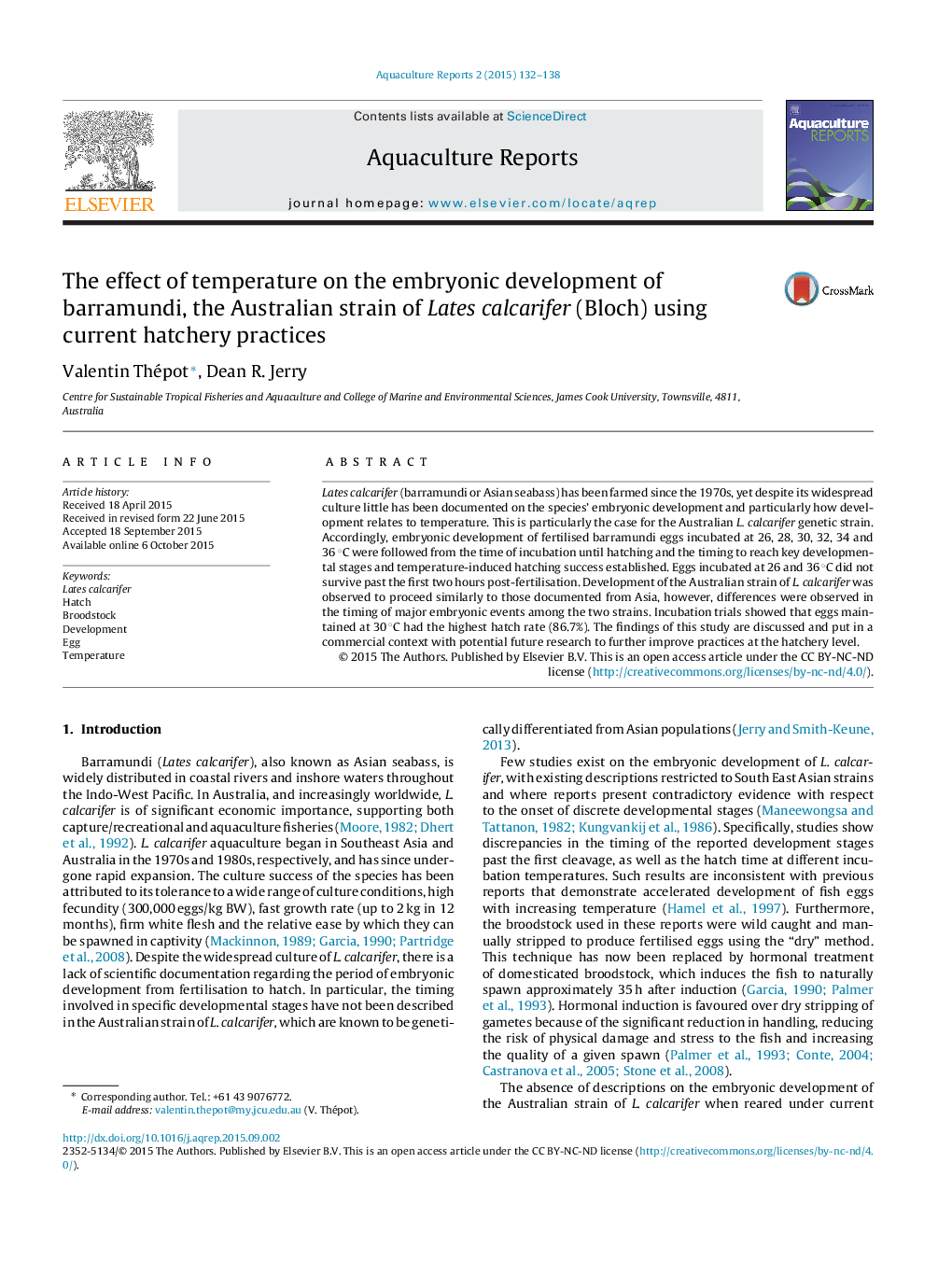| Article ID | Journal | Published Year | Pages | File Type |
|---|---|---|---|---|
| 4437981 | Aquaculture Reports | 2015 | 7 Pages |
•The embryonic development of Lates calcarifer and the effect of different incubation temperatures were firstly described in detail for the Australian strain.•The rate of embryonic development was positively correlated to the increase in incubation temperature and the thermal tolerance range for the Australian strain of L. calcarifer eggs was found to be 28–34 °C.•The temperature at which broodstock are kept is likely to influence the thermal tolerance range and ideal incubation temperature of their offspring.
Lates calcarifer (barramundi or Asian seabass) has been farmed since the 1970s, yet despite its widespread culture little has been documented on the species’ embryonic development and particularly how development relates to temperature. This is particularly the case for the Australian L. calcarifer genetic strain. Accordingly, embryonic development of fertilised barramundi eggs incubated at 26, 28, 30, 32, 34 and 36 °C were followed from the time of incubation until hatching and the timing to reach key developmental stages and temperature-induced hatching success established. Eggs incubated at 26 and 36 °C did not survive past the first two hours post-fertilisation. Development of the Australian strain of L. calcarifer was observed to proceed similarly to those documented from Asia, however, differences were observed in the timing of major embryonic events among the two strains. Incubation trials showed that eggs maintained at 30 °C had the highest hatch rate (86.7%). The findings of this study are discussed and put in a commercial context with potential future research to further improve practices at the hatchery level.
